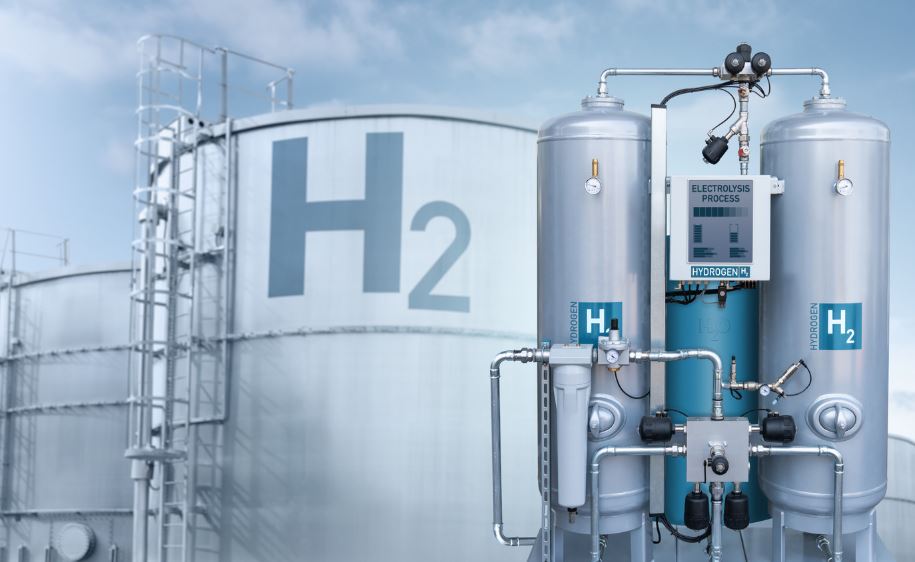Green hydrogen is expected to play a central role in the decarbonisation of hard-to-abate sectors, and by 2050, as much as 20% of global demand for the fuel and its derivatives could be met through international trade. That’s the key finding of a new report from the International Renewable Energy Agency (IRENA), which outlines how emerging export hubs in Latin America, Africa, and the Middle East could reshape global energy flows—if financing conditions don’t get in the way.
The report estimates that 73% to 80% of traded hydrogen will be in the form of derivatives—particularly ammonia, e-methanol, and direct reduced iron (DRI)—rather than pure hydrogen, which remains costly and technically complex to ship over long distances. These hydrogen-based commodities offer greater conversion efficiencies and lower transport costs, enabling more practical global trade routes.
To meet projected global trade volumes of 260 million tonnes hydrogen equivalent (H2-eq) by mid-century, the report calls for unprecedented infrastructure investment—estimated at USD 2.49 trillion. This includes 4.7 terawatts (TW) of new renewable energy capacity, 2.1 TW of electrolysers, and 0.9 terawatt-hours (TWh) of battery storage. Almost half of that capital will be needed just to build out renewables.
The scale of the challenge is vast. Today’s hydrogen infrastructure is negligible compared to what will be required in the next 25 years. Transport systems and conversion facilities for hydrogen derivatives will need to be developed nearly from scratch.
In a scenario where all countries operate under equal financing conditions (Same WACC Scenario), regions with abundant solar and wind resources—such as Latin America, sub-Saharan Africa, the Middle East, and North Africa—emerge as the most competitive exporters. Europe, with high domestic production costs and limited renewable potential, is positioned as the largest import market. IRENA estimates that North Africa alone could supply 18% of Europe’s green hydrogen demand in 2050, primarily through ammonia (5 Mt H2-eq), compressed hydrogen (3.2 Mt), and methanol (0.8 Mt).
But when country-specific financing risks and capital costs are introduced (Differentiated WACC Scenario), the competitiveness landscape shifts dramatically. Australia, China, and the United States, with stronger financial markets and lower risk premiums, overtake resource-rich but capital-constrained regions. This reordering highlights the decisive role of cost of capital in hydrogen economics.
Ammonia is forecast to dominate global hydrogen trade, accounting for 30% of total demand through imports. It is followed by e-methanol (18%), gaseous hydrogen (14.4%), and DRI (14%). Each vector presents distinct requirements and constraints.
For example, e-methanol production depends on access to biogenic carbon. Countries with abundant renewables but limited carbon sources may find it more economical to import methanol than to rely on costly direct air capture technologies. Meanwhile, DRI trade is expected to be driven by Latin America and Africa, capitalising on low-cost hydrogen and proximity to iron ore deposits.
Europe, by contrast, is more likely to import finished DRI than raw materials, to reduce energy and conversion costs onshore. This could shift traditional raw material flows in the iron and steel industry.
Policy Will Make or Break the Market
Beyond technical feasibility and cost structures, IRENA emphasises that green hydrogen trade hinges on coordinated international policy. Certification frameworks, carbon pricing mechanisms, and preferential procurement will be crucial in creating stable demand and de-risking infrastructure investment.
The global regulatory landscape is beginning to align: as of October 2024, at least 56 countries and regional bodies have adopted hydrogen-specific policies, and 21 more are developing strategies. The EU’s Carbon Border Adjustment Mechanism (CBAM), which places a price on the carbon content of imports, is already influencing clean hydrogen demand and trade flows.
The IRENA report maps a clear opportunity—but one that depends heavily on early investment, policy harmonisation, and inclusive financing. In theory, global hydrogen trade could reduce energy inequality, decarbonise supply chains, and offer new growth avenues for developing economies. In practice, without equal access to low-cost capital, that vision may remain unevenly distributed.
Stay updated on the latest in energy! Follow us on LinkedIn, Facebook, and X for real-time news and insights. Don’t miss out on exclusive interviews and webinars—subscribe to our YouTube channel today! Join our community and be part of the conversation shaping the future of energy.





